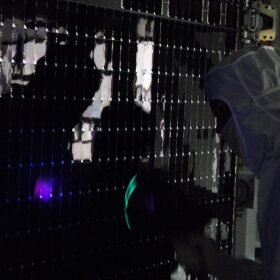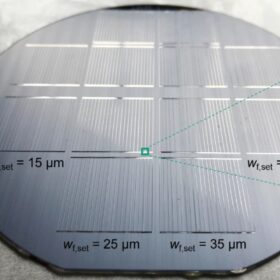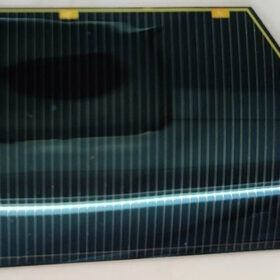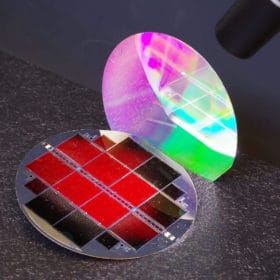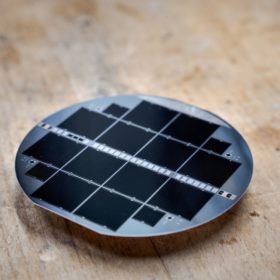The impact of temperature on III-V solar cells
Scientists in Spain have analyzed the impact of temperature and spectral conditions on III-V solar cells employed in concentrator photovoltaic modules. They claim to have assessed the cell behavior under unprecedented operating condition.
III–V triple-junction solar cell with mask, plate front metallization achieves 31.6 % efficiency
Fraunhofer ISE researchers utilized a new front metallization technique to produce a III-V gallium arsenide solar cell. For mask and plate front metallization, they used a new two-step printing scheme that reportedly allows for the realization of extremely narrow mask openings.
Five-junction III-V solar cell with 35.1% efficiency
Chinese researchers have used metal-organic chemical vapor deposition (MOCVD) to produce a 12 cm2, five-junction solar cell with a minimal number of mismatch dislocations. The cell has an open-circuit voltage of 4.727 V, a short-circuit current density of 860 mA/m2, and a fill factor of 86.38%.
Fraunhofer ISE achieves 35.9% efficiency for III-V triple-junction solar cell based on silicon
The cell, which looks externally like a device with a two-terminal architecture, was built with III-V semiconductor layers that were connected to the silicon sub-cell on the atomic level. The cell may be used in electrically powered aircraft and drones.
III-V multi-junction solar cell with 39% efficiency
Finnish scientists have developed a four-junction solar cell based on III-V semiconductor materials that is said to be able to achieve a wide spectral coverage. The cell was monolithically grown on gallium arsenide by molecular beam epitaxy (MBE).
Gallium arsenide phosphide tandem solar cell with 25.0% efficiency
The demonstrated device, according to the academics, is built with interfaces between the active cell layers that improve the top cell carrier collection. The cell was built with texturing and a hydrogenated amorphous silicon (a-Si:H) passivation of a silicon back surface.
Fraunhofer ISE claims 25.9% efficiency for III-V tandem solar cell
The new results mark an improvement on the institute’s previous 24.3% efficiency record. The III-V tandem solar cell is directly grown on silicon.
Solar cells from space are on the way
A team at the U.S. National Renewable Energy Laboratory has come up with a new process that would reduce the production cost of highly expensive – and highly efficient – gallium arsenide cells.
